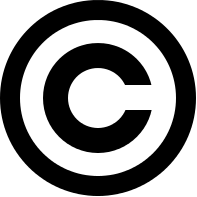 Every now and then, plaintiffs attempt to leap into the shoes of a copyright holder by obtaining permission from the copyright owner to sue an alleged third party infringer. But these type of bare “right to sue” assignments in many instances fall short of what is required under federal law.
Every now and then, plaintiffs attempt to leap into the shoes of a copyright holder by obtaining permission from the copyright owner to sue an alleged third party infringer. But these type of bare “right to sue” assignments in many instances fall short of what is required under federal law.
Enforcement Action Rights under the Copyright Act
According to the federal Copyright Act, only “[t]he legal or beneficial owner of an exclusive right under a copyright is entitled, subject to the requirements of section 411, to institute an action for any infringement of that particular right committed while he or she is the owner of it.” 17 U.S.C. § 501(b) (emphasis added).
The Copyright Act lists the following exclusive rights of the owner of a copyright:
(1) to reproduce the copyrighted work in copies or phonorecords;
(2) to prepare derivative works based upon the copyrighted work;
(3) to distribute copies or phonorecords of the copyrighted work to the public by sale or other transfer of ownership, or by rental, lease, or lending;
(4) in the case of literary, musical, dramatic, and choreographic works, pantomimes, and motion pictures and other audiovisual works, to perform the copyrighted work publicly;
(5) in the case of literary, musical, dramatic, and choreographic works, pantomimes, and pictorial, graphic, or sculptural works, including the individual images of a motion picture or other audiovisual work, to display the copyrighted work publicly; and
(6) in the case of sound recordings, to perform the copyrighted work publicly by means of a digital audio transmission.
17 U.S.C. § 106. But “a person holding a non-exclusive license is not entitled to complain about any alleged infringement of the copyright.” HyperQuest, Inc. v. N’Site Sols., Inc., 632 F.3d 377, 382 (7th Cir. 2011). In order words, to have the requisite standing to sue, a plaintiff must exclusively own one of the enumerated rights listed above. Consequently, enforcement actions are limited to the specific rights exclusively owned. For example, a plaintiff who owns the exclusive rights to perform a literary work can only sue to enforce that specific rights. Such a plaintiff, cannot go after alleged infringers making unauthorized copies of the literary work.
 [For Black History Month, we invited some of our alumni to provide their reflections as guest bloggers of the month. This post is from Emil Ovbiagele L’14.]
[For Black History Month, we invited some of our alumni to provide their reflections as guest bloggers of the month. This post is from Emil Ovbiagele L’14.]

